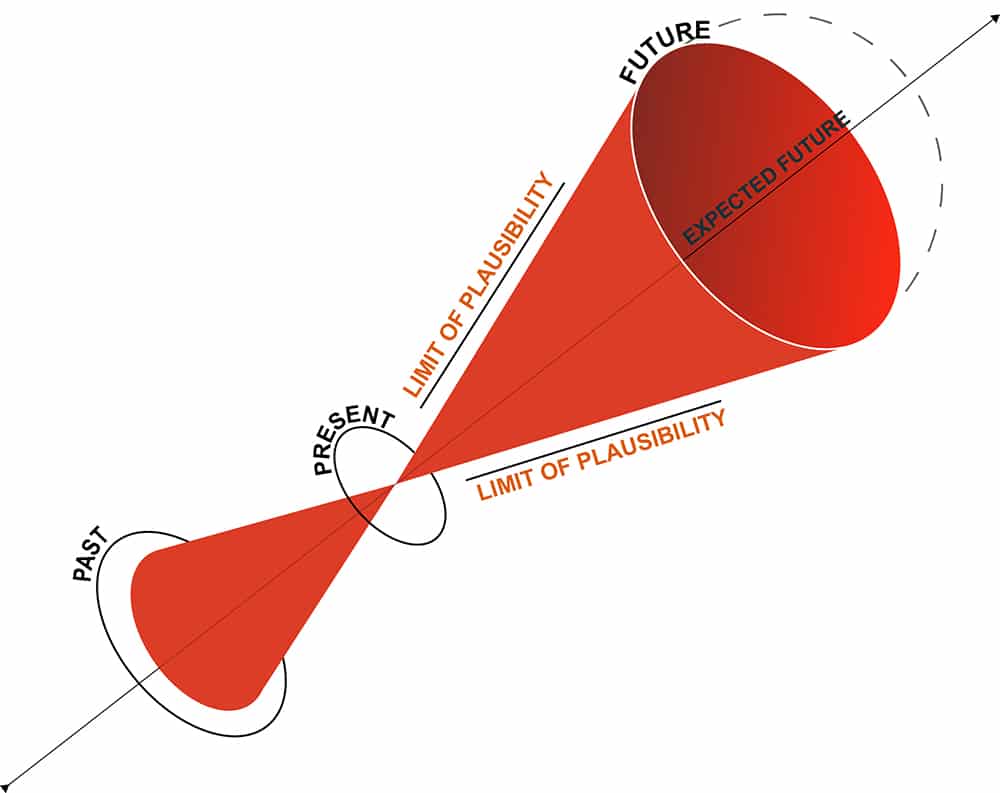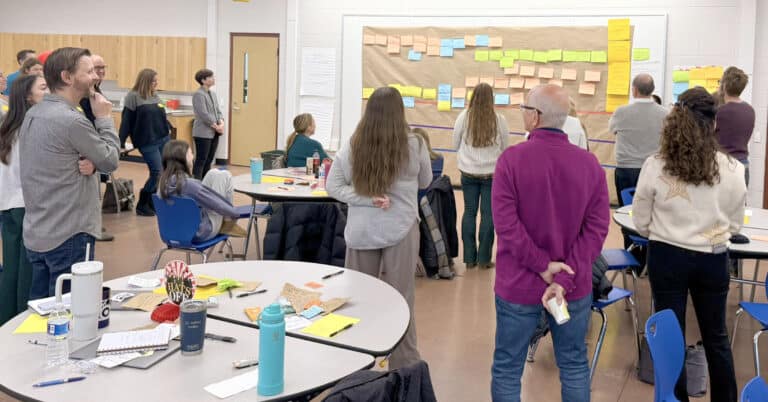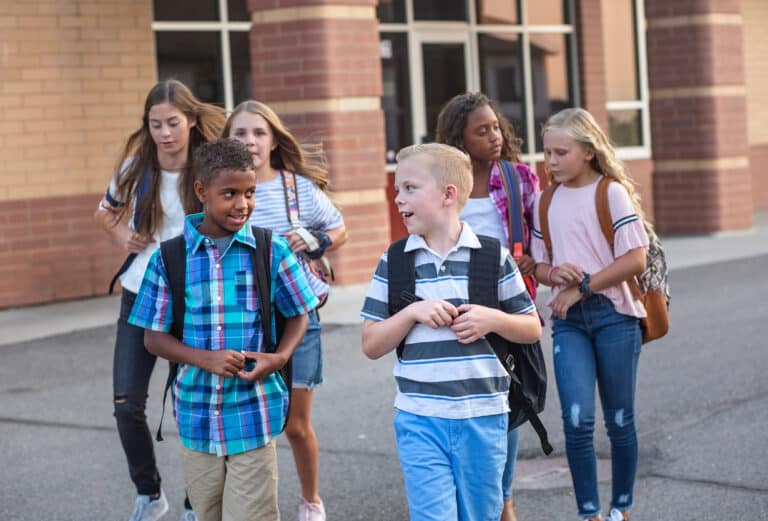By K. Gogins, Roseville Area Schools, and L. Payne, University of St. Thomas and Mahtomedi Public Schools, in Minnesota
What type of education system do we need for our young people and community to thrive in the future? As local school board members, we often reflect on this important question, especially during the strategic planning process every three to five years.
However, if we want to create a future where everyone thrives, we must look further ahead. The future is inherently uncertain, but we cannot simply let it unfold without our influence. We must grapple with change and make sense of what we want to happen, what we think will happen and what else might happen instead.
To help school board members in Minnesota begin to examine the future in new ways, KnowledgeWorks partnered with the University of St. Thomas (UST) and the Minnesota School Boards Association (MSBA) to kick off Leading for the Future, or LeaF. The inaugural cohort included board members with just one to over 20 years of experience on school boards representing districts of varying geographical locations and sizes (563 students to over 38,000 students) in Minnesota. The LeaF program offered school board members an opportunity to engage with futures thinking, exposing them to exciting new tools to support broadly envisioning and impacting the future, using a longer time horizon than traditional strategic planning allows.
Examine the past, present and futures with the Cone of Plausibility. Learn how to use it and see it modeled by Katie King and Anne Olson.
Learn more >>
What is futures thinking?
The LeaF cohort focused on four key concepts of futures thinking throughout the year and connected them to board-level work.
- The Cone of Plausibility tool (pictured) demonstrates how the present has its roots in the past. It sows the seeds for what will happen in the future, so we need to review the past and present when theorizing about the future.
- The further out we think in the future, the more uncertainty there is. Therefore, we need to consider multiple plausible futures. Not just what will happen if things continue their current trajectory (baseline future) and what we want the future to be like (our vision), but also alternative futures that could happen. The Cone of Plausibility (pictured) provides a frame of reference for considering the range of possible futures. As we move further into the future, the range of what might be plausible expands.
- Another key concept of futures thinking is critically thinking from different perspectives, such as looking at the situation from alternative viewpoints (e.g., a child’s, a parent’s and a staff’s views); identifying and challenging our assumptions (e.g., an assumption before 2020 would be that school requires buildings); overtly considering short-term, long-term and unintended consequences; understanding the big picture; and considering various “what if…” scenarios.
- The last key concept is planning backward from the vision, rather than forward from the present, as is done in strategic planning.
Using futures thinking as a board member can have an important impact on districts. Applying this method of thinking at a board-level increases the likelihood of consecutive five-year strategic plans delivering the district’s desired vision. Coordinated work toward a long-term vision also enables leaders identify and begin to take down barriers that are slow to change, such as needed legislation or department of education rule changes. A futures lens can also help leaders identify and mitigate the impact of changes that work against the vision and provide time to incrementally build solid foundational supports needed for a desired future state of education.
Don’t miss our upcoming education forecast. Watch the preview and sign up to receive it directly to your inbox.







